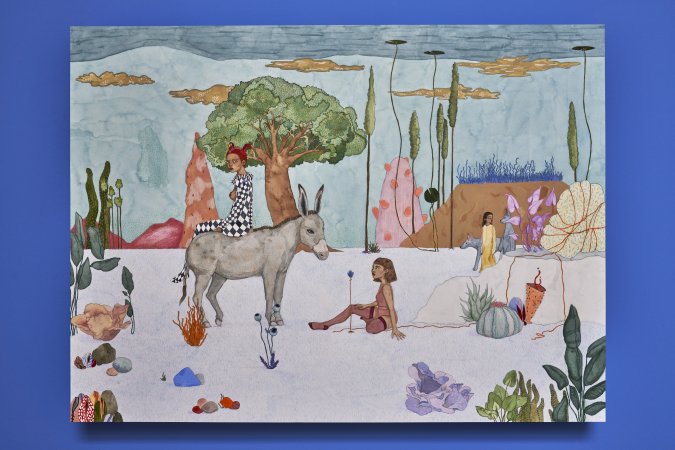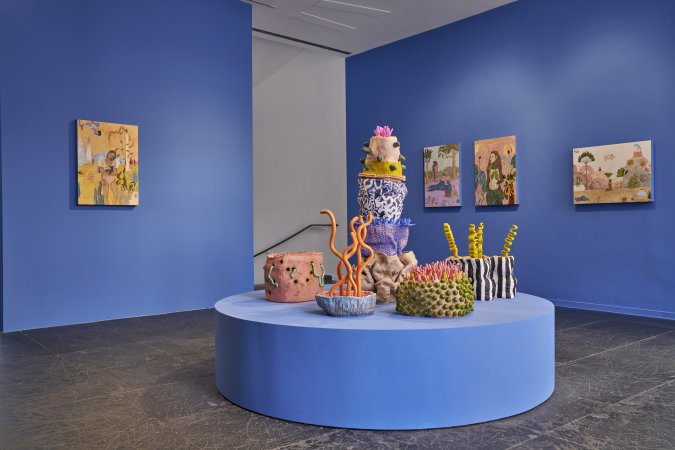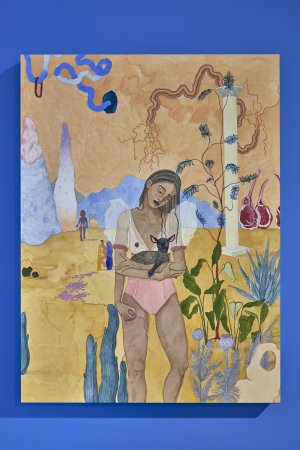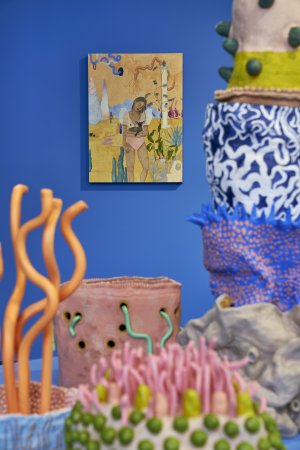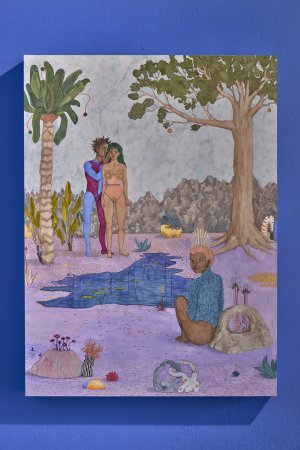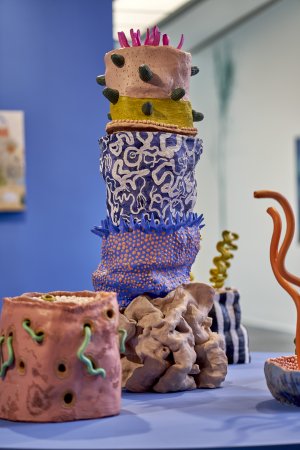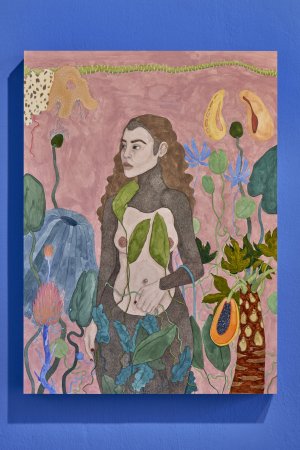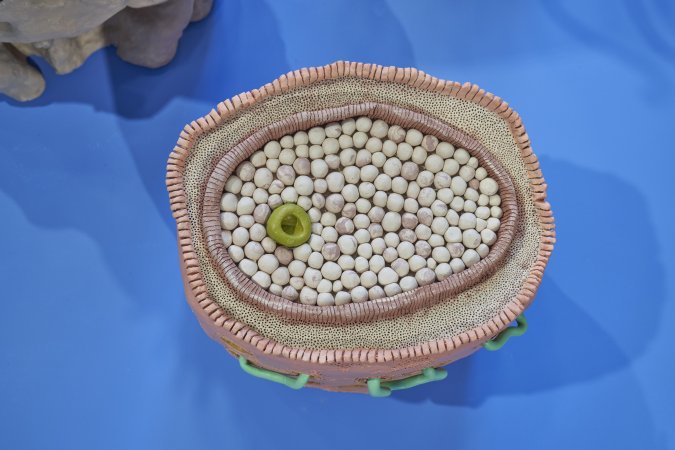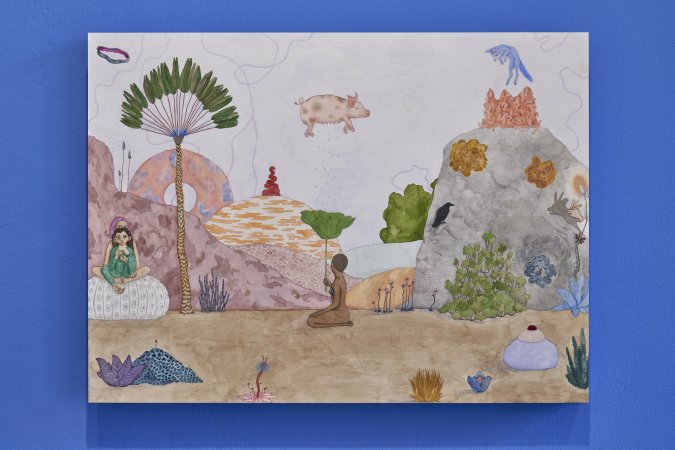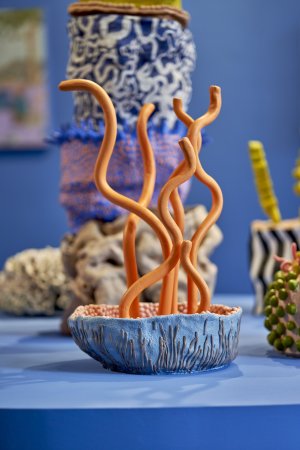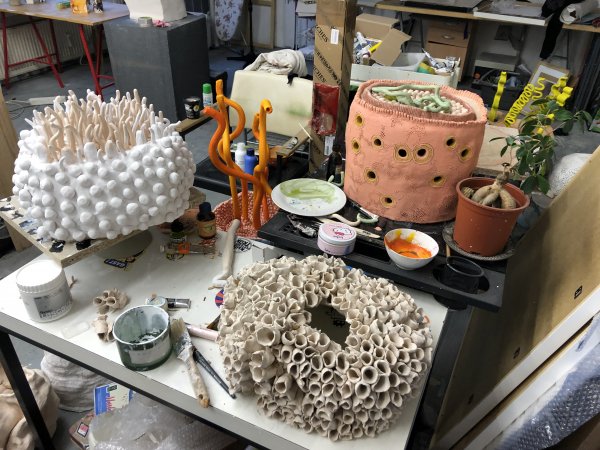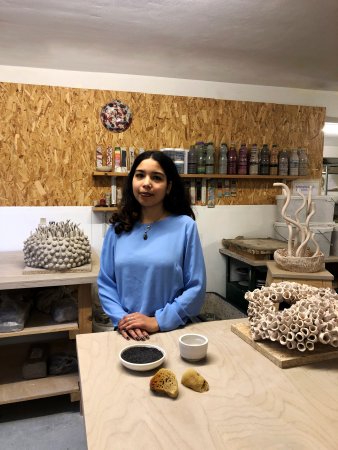Saya Schulzen
Wölfin im Menschenfell, 2021
Milch, 2021
Sublime Submersion, 2021
Die Nähe schlummert, 2021
Weltinnenraum, 2021
Mixed media on watercolour paper (watercolour, oil colour pencils, gouache, acrylics)
78,8 x 58,3 cm
Berührte Natur, 2021
Seven sculptures
Burnt clay, acrylics, poppy seeds, propolis
Dimension variable
Courtesy the artist
Saya Schulzen is an artist in the age of the Anthropocene. She creates associative images of fantastic landscapes in which human and non-human beings live on an equal footing and are interconnected.
Schulzen works sculpturally with clay and she draws with watercolour, gouache and oil pencils. She creates artistic ecologies from imagined and real beings. The landscapes have something paradise-like about them. The imagined worlds are created through the flat, ornamental use of colours on which she arranges her figures. The colours and lines in her paintings are forces that seem naturalistic, but move away from a depiction of the real.
The starting point of her drawings is always the human face, whose gaze out of the pictorial space establishes the connection to the viewer. Schulzen shapes her compositions around this gaze. The artist does not plan the structure of the picture in advance, but relies on her intuitive and associative approach in which she allows the forms to grow in the process of drawing. Humans, animals and plants share the same space as an ideal surface of equal existence. The artist invents a poetic space in which symbolically the interconnectedness of the different species in an equal coexistence is represented as a new ecology.
While some creatures are imaginative neologisms, Schulzen devotes detailed, lifelike representations to wild herbs. Called weeds, the linguistic designation betrays a human classification of living beings within a scale of values of usability. The wild weed symbolises the primordial, which must be brought under control through cultural practice. This concept needs to be rethought and thus stands for a transformation in the understanding of nature. Today’s understanding of ecological systems, in which all living beings are interconnected and interdependent and in which nature must be understood as a constant process, overrides the culturally conditioned and humanly constructed value judgement towards individual life forms.
Touch is a recurring motif in Schulzen’s work. The gesture of physical proximity between the different figures stands for a new awareness of felt connection with the different.
In her sculptural work, Saya Schulzen creates figures in clay inspired by marine worlds. Schulzen forms sea anemones, creatures that live as solitaires on the seabed, and which, as animals, resemble plants and flowers in their appearance. Again, the blurring of the boundary between the different life forms is a theme of Schulzen’s artistic interpretation. Her work is representative of a generation of artists and writers who plead for a new sensibility in which living beings are understood both in their physical, scientific and subjective reality. They seek a new humanism in which all living beings and things of nature are ensouled.
Unlike the numerous dystopian world views that are taking place today in the debate about the Anthropocene, Schulzen’s work positions itself as a fantastic projection of paradisiacal states of hierarchy-free coexistence. The idealised pictorial worlds are an expression of a search for new narratives of being human, in which biological boundaries are abolished and fantastic and dreamlike elements are allowed to coexist.
Saya Schulzen (*1992, Bad Schwalbach, DE) has been studying at the Hochschule für Gestaltung Offenbach (DE) with Prof. Heiner Blum and Prof. Merja Herzog-Hellstén since 2016. Her main focus is on ceramic sculptures and watercolor drawings. Previously, she studied philosophy at the Goethe-University Frankfurt am Main (DE). Among others, Saya Schulzen has exhibited at the following institutions: Kunstforum der TU Darmstadt, Darmstadt (DE), HfG Kunsthalle, Offenbach am Main (DE), Kunstansichten, Offenbach am Main (DE).

